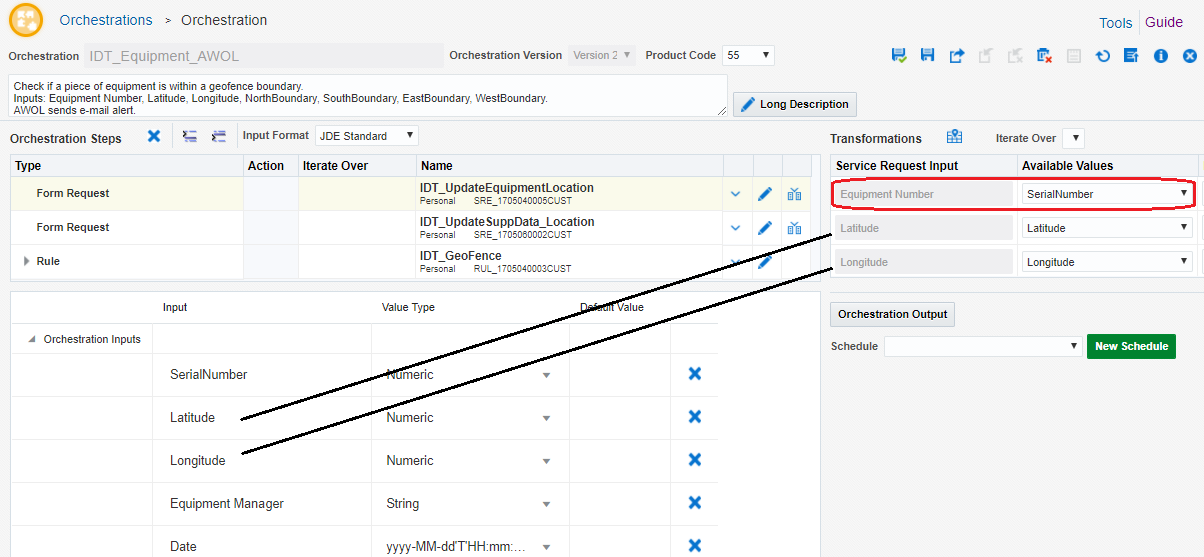Mapping Orchestration Inputs
On the Orchestration design page, use the Transformations area to map orchestration inputs to inputs defined in an orchestration step, such as inputs in a rule, cross reference, white list, or service request component. The Transformations area includes an Auto Map button for automatically mapping any matching inputs in the orchestration and orchestration step.
If an orchestration and an orchestration component use different input names to identify the same data, you can use the grid in the Transformations area to map the inputs. This facilitates the reuse of components, so you can avoid having to create a new component simply to match the input names (from a third-party application or device) in a new orchestration.
To better understand how to map inputs, see the example depicted in the following image. In this example, two orchestration inputs have the same name as the inputs in the service request. These inputs were automatically mapped using the Transformations Auto Map button. The orchestration also contains a SerialNumber input to identify equipment, which is represented in EnterpriseOne as "EquipmentNumber." To map these inputs in the Transformations area, "SerialNumber" was selected in the Orchestration Input drop-down list (renamed to Available Values in Orchestrator Studio 6.1.0) next to the EquipmentNumber service request input.

Initially, when you have a small number of orchestrations in your system, it is recommended to keep all input names consistent among the orchestration and all components (orchestration steps) used by orchestration. But as your library of orchestrations and orchestration components increases, instead of creating new components with input names that match the orchestration inputs, you can use transformations to map the orchestration inputs to an existing component.
To map inputs:
In the Orchestration design page, select an orchestration step to which you want to map orchestration inputs.
Click the Transformations Auto Map button to map matching inputs. The Studio automatically maps inputs with the same name; the matching orchestration inputs appear in the Orchestration Input column (named Available Values in Orchestrator Studio 6.1.0) next to the matching input in the "Orchestration Step Input" column.
To map an orchestration input to an orchestration step input that does not have the same name:
In the Transformations table, click the drop-down menu in the Orchestration Input column next to the orchestration step input.
Select the orchestration input to map to the orchestration step input.
For example, in the preceeding image, SerialNumber is mapped to EquipmentNumber in the Service Request Input.
You can map a literal value to the orchestration step input by entering a value in the Default Value column.
(Orchestrator 6.1.0) If you are mapping values from an array, you can configure the orchestration to iterate over the orchestration step so the step is called once for each row in the array:
After defining the array in the Orchestration Inputs section, click the Iterate Over drop-down list in the Transformations area and select the name of the array input.
Make sure to map the orchestration inputs for the array to the inputs defined in the orchestration step, as shown in the following example:

Notice that in the Orchestration Steps grid, the name of the array was automatically inserted into the Iterate Over column in the Service Request step.